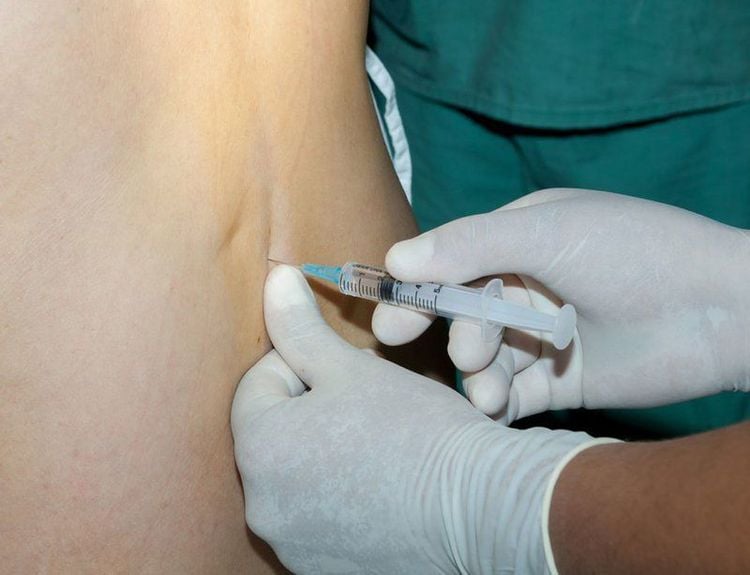This is an automatically translated article.
The article was professionally consulted with Master, Doctor Le Hong Duong - Anesthesiologist - Department of General Surgery & Anesthesia - Vinmec Hai Phong International General Hospital.The epidural space is located in the spinal column, where nerves run out from the spinal cord to perform the task of controlling movement, feeling the skin, and partitioning according to the corresponding spinal cord segment. Epidural space anatomy has implications for spinal anesthesia and epidural anesthesia.
1. What is the epidural space, where is it located in the body?
Located within the spine, the epidural space is a virtual and enclosed space that communicates with the paravertebral space. Location is determined by upper, lower, anterior, posterior and lateral limits, namely:Upper limit is the occipital foramen inferior limit is the sacral slit Anterior limit is the posterior longitudinal ligament Lateral limit posterior is the yellow ligament. The two sides are the small stalk and the intervertebral foramen.
2. Structure of the epidural space
In terms of size, volume and structure, the epidural space has the following characteristics:
Dimensions: Narrow anteriorly, 1 - 3mm wide behind, at L2 level with the widest dimension up to 5 - 6mm. Volume: Vietnamese people have an average epidural volume in the range of 120 - 140ml. Characteristics: Depending on the location, the epidural pressure can be negative or zero.

Nerve roots running from the spinal cord The Batson venous plexus connects directly to the veins located in the pelvis and the Azygos vein system. Fat organization and loose connective tissue Lymphatic system
3. Function of the epidural space
Located in the spine, the epidural space is the place to store nerve roots running from the spinal cord, performing the tasks of controlling and controlling movement and sensation, including the autonomic nerves connecting to the internal organs. and skin of the body.Depending on the segment, the nerves will perform different control tasks. This is also the basis for performing and monitoring techniques of spinal anesthesia and epidural anesthesia. Based on that, the doctor, anesthesiologist can assess the level of anesthetic and predict possible complications.
Some basic landmarks due to the plexus, nerve branches running from the spinal cord to the epidural space perform the task of controlling and controlling:
Shoulder region: The branches of the cervical and brachial plexuses govern. Diaphragm: Branches from C4 govern. Thoracic region: Branches from T8 innervate. Umbilical region: Branches from T10 innervate. Inguinal region: Branches from T12 govern. Nephrectomy area: Branches from T7 dominate. Anatomy of the epidural space is particularly important in the specialty of anesthesiology - resuscitation to perform anesthetic methods during surgery, diagnosis and treatment of pathologies.
Please dial HOTLINE for more information or register for an appointment HERE. Download MyVinmec app to make appointments faster and to manage your bookings easily.














